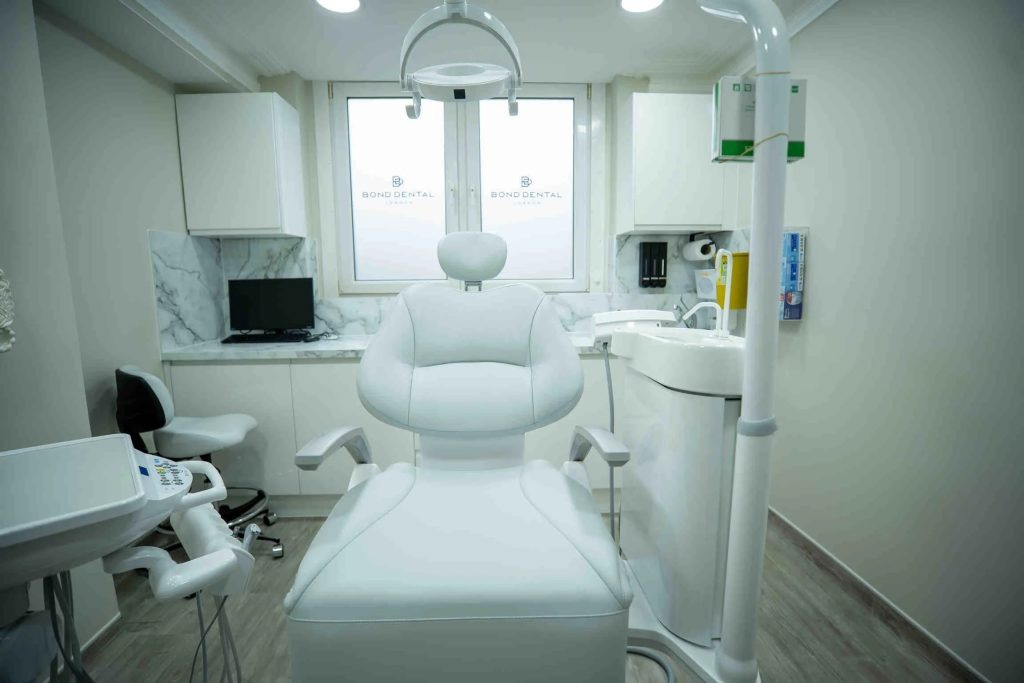Why More Dentists Are Opening Their Own Practices
In recent years, more dentists have been taking the leap into business ownership by opening their own practices. This trend, often referred to as establishing a squat dental practice, is gaining traction due to the growing desire for professional autonomy, financial benefits, and the ability to create a patient-centered environment. But what exactly is driving this shift, and what should aspiring practice owners consider before taking the plunge? Let’s explore in detail.
The Desire for Autonomy and Control
Many dentists choose to open their own practices because they want more control over their careers and professional environments. Working under corporate dental chains or as an associate in someone else’s practice often means following their rules, treatment protocols, and management styles. By opening a private practice, dentists gain independence in the following ways:
Clinical Freedom
Owning a practice allows dentists to decide which treatments, materials, and technology to use. They can choose the best procedures for their patients rather than being restricted by corporate guidelines or insurance limitations. This ensures better patient care and satisfaction.
Operational Decisions
Dentists running their own practices have the power to make key decisions, such as:
- Setting their office hours
- Choosing their team members
- Selecting suppliers and vendors
- Deciding on marketing strategies
Financial Control
Unlike associates who receive a fixed salary or commission, practice owners retain a larger share of their revenue. They can reinvest in the business, expand services, or improve patient experiences.

The Financial Incentives of Owning a Practice
Starting a squat dental practice requires an upfront investment, but the long-term financial benefits make it worthwhile. Some of these include:
Equity Building
Owning a practice is an investment. Instead of working for someone else and contributing to their business growth, practice owners build equity in an asset they can later sell, expand, or pass on.
Profit Retention
Practice owners keep the profits they generate rather than share them with an employer. The more successful the practice, the higher the financial rewards.
Tax Benefits
Running a dental practice comes with tax advantages, including deductions for:
- Equipment and supplies
- Office rent and utilities
- Employee salaries and benefits
- Continuing education and professional development
Table 1: Comparing Earnings – Associate vs. Practice Owner
| Area | Size (sq ft) | Description |
| Reception | 200 | Welcoming, with comfortable seating |
| Waiting Room | 300 | Spacious with natural light |
| Treatment Room (4x) | 120 each | Equipped for dental procedures |
| Sterilization Room | 100 | Must be centrally located |
| Staff Rooms | 150 | Offices, break rooms |
Creating a Personalised Patient Experience
One of the biggest advantages of owning a dental practice is the ability to shape patient experiences. Many corporate clinics focus on high patient volumes and standardised treatments, which can make patients feel like just another number. In a privately owned practice, dentists can:
Build Long-Term Relationships
When patients consistently see the same dentist, it fosters trust and loyalty. They are more likely to return for regular check-ups and recommend the practice to others.
Customise Services
Practice owners can focus on specific dental specialties or cater to niche markets, such as:
- Pediatric dentistry
- Cosmetic and aesthetic dentistry
- Orthodontics
- Holistic dentistry
Enhance Comfort Through Dental Practice Design
The dental practice design plays a huge role in how patients perceive the clinic. A well-designed space can reduce anxiety and improve patient satisfaction. Modern trends in dental clinic design include:
- Open, airy layouts to create a welcoming atmosphere
- Natural lighting to enhance comfort
- Noise reduction techniques to make procedures feel less stressful
- Comfortable seating areas for patients and families

Graph 1: Patient Preferences in Dental Clinics
Graph showing patient satisfaction levels based on factors such as waiting room ambience, noise levels, and staff friendliness.
Challenges of Opening a Dental Practice
While owning a dental practice is rewarding, it also comes with challenges. Prospective owners should be prepared for:
High Initial Costs
Setting up a practice requires a significant financial investment in:
- Lease or property purchase
- Dental equipment and technology
- Office furniture and supplies
- Marketing and branding
Navigating Regulations
Dentists must comply with legal and professional requirements, including:
- Health and safety regulations
- Insurance policies
- Employment laws
- Patient data protection standards
Business Management Skills
Running a successful practice isn’t just about dentistry—it requires strong business skills. Dentists must learn or hire professionals for:
- Financial planning and budgeting
- Human resources management
- Marketing and patient outreach
| Table 2: Estimated Costs of Opening a Dental Practice | |
| Expense Category | Estimated Cost Range |
| Equipment & Technology | £50,000 – £200,000 |
| Office Lease & Renovation | £60,000 – £150,000 |
| Marketing & Branding | £10,000 – £30,000 |
| Staff Salaries (1st Year) | £80,000 – £150,000 |
| Total Initial Investment | £200,000 – £500,000 |
Actionable Steps for Dentists Considering Their Own Practice
For dentists ready to embark on this journey, here are key steps to take:
1. Conduct Market Research
Analyze patient demographics, competition, and demand in the chosen location. A well-researched location increases the chances of success.
2. Develop a Solid Business Plan
A clear business plan should outline:
- Goals and objectives
- Services offered
- Budget and financial forecasts
- Marketing strategies
3. Secure Funding
Dentists can explore funding options such as:
- Bank loans
- Dental-specific financing programs
- Personal savings or investor partnerships
4. Prioritise Dental Practice Design
A well-thought-out dental practice design improves workflow efficiency and enhances patient experiences.
5. Invest in Marketing
Use both digital and traditional marketing techniques to attract new patients:
- SEO-optimised website
- Social media presence
- Community outreach
Choosing the Right Equipment and Technology
Investing in high-quality equipment and modern dental technology enhances efficiency and improves patient care. Key considerations include:
- Essential Equipment: Dental chairs, sterilisation units, X-ray machines, and handpieces should be selected based on quality, durability, and ease of maintenance.
- Digital Dentistry: Tools like intraoral scanners, 3D imaging, and digital impressions streamline workflows and improve diagnostic accuracy.
- Practice Management Software: Implementing an efficient system for appointment scheduling, patient records, and billing simplifies operations and improves patient communication.
Hiring and Training the Right Team
A skilled and motivated team plays a vital role in the success of a dental practice. Steps to ensure a strong team include:
- Hiring the Right Staff: Recruit qualified dental assistants, hygienists, and receptionists with experience in patient care and administrative tasks.
- Ongoing Training: Regular training sessions ensure the team stays updated with the latest dental techniques, customer service strategies, and compliance requirements.
- Building a Positive Work Culture: Encouraging teamwork, open communication, and professional growth improves job satisfaction and reduces staff turnover.
Ensuring Compliance with Legal and Regulatory Requirements
Operating a dental practice requires adherence to industry regulations and legal requirements. Key considerations include:
- Licensing and Certifications: Ensure all dental professionals have the necessary qualifications and licences to practice.
- Health and Safety Regulations: Compliance with infection control, sterilisation protocols, and workplace safety standards is essential.
- Data Protection and Patient Confidentiality: Implementing secure patient record management systems in compliance with data protection laws (such as GDPR) safeguards sensitive information.
Creating an Outstanding Patient Experience
Delivering a positive patient experience encourages loyalty and word-of-mouth referrals. Steps to enhance patient satisfaction include:
- Efficient Appointment Scheduling: Offer online booking, reminders, and flexible scheduling to reduce wait times and improve convenience.
- Comfortable Waiting Area: A welcoming reception with comfortable seating, calming décor, and entertainment options helps ease patient anxiety.
- Personalised Care: Taking the time to explain procedures, address concerns, and follow up after treatments builds trust and strengthens patient relationships.
Planning for Long-Term Growth and Expansion
As the practice grows, planning for future expansion ensures continued success. Strategies include:
- Scaling Services: Expanding into specialties such as cosmetic dentistry, orthodontics, or implantology based on patient demand.
- Adding Additional Locations: Opening new branches in high-demand areas to increase patient reach.
- Investing in Continuous Learning: Staying updated with industry trends, attending dental conferences, and joining professional networks to remain competitive.
Conclusion
The rise in dentists opening their own practices reflects the profession’s changing landscape. While the journey comes with challenges, the rewards—both financial and personal make it an attractive option. By carefully planning finances, focusing on an excellent dental practice design, and prioritising patient experience, dentists can build thriving practices that stand out in the industry.
For expert assistance in creating a dental clinic that embodies both functionality and aesthetics, consider partnering with Divo Interiors Ltd.













Post Comment